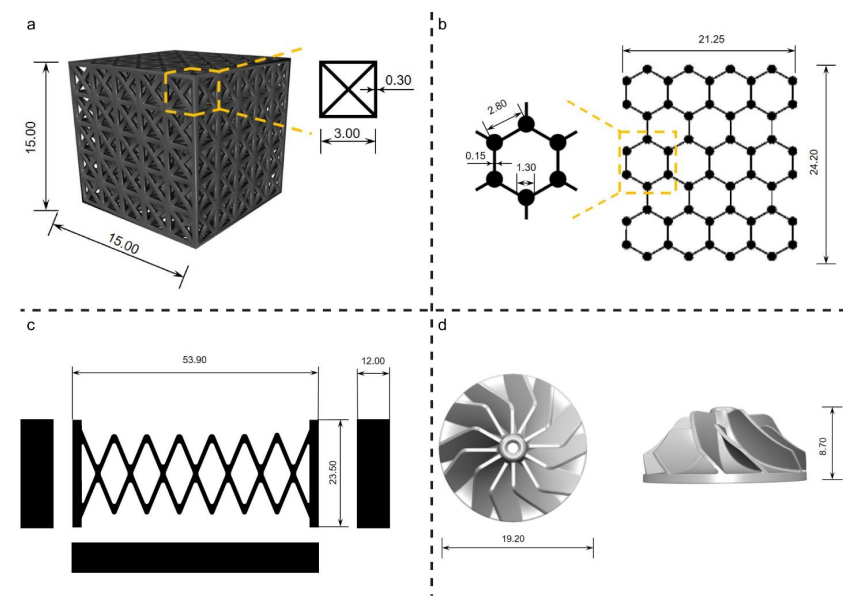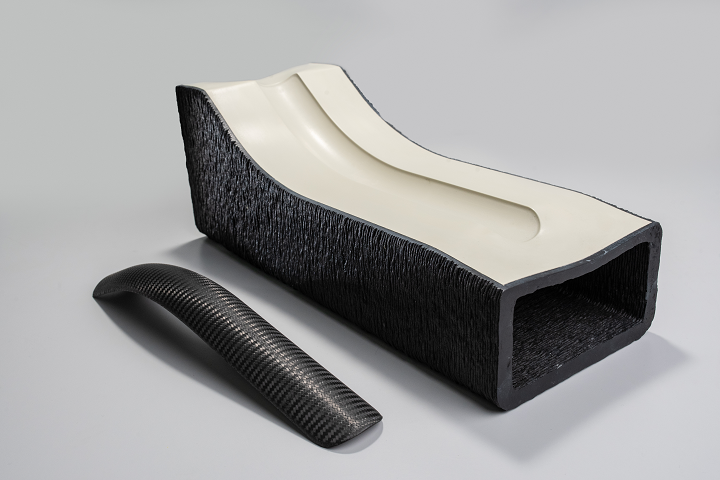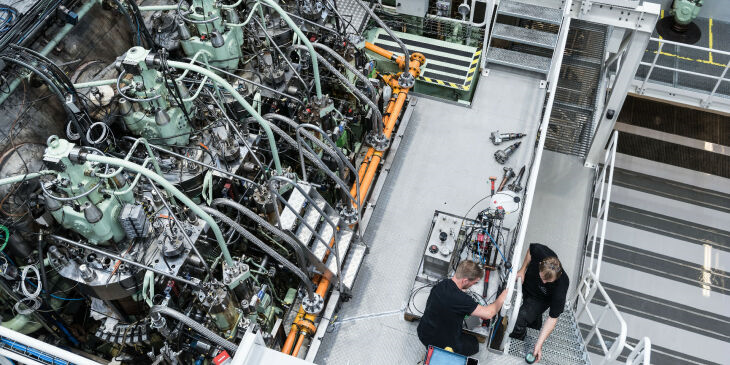We’re starting with some interesting research on 3D printing molecular magnets in today’s 3D Printing News Briefs, and then moving on to materials, as the Lehvoss Group plans to present its composite material solutions. BCN3D has announced the availability of its Metal Pack and a new fiber-filled filament, as well as new autocalibration systems for its printers. Moving on, a 3D printed fuel injection nozzle could lower make cargo ships more eco-friendly. Finally, a man in Canada is facing charges after police seized two 3D printed firearms from him.
3D Printing Durable Molecular Magnets

Schematic figure for the 3D printing size (in millimeter) of (a) the lattice structure
model and (b) the graphene-structure model, (c) the krigami structure model and (d) the turbine
rotor model.
A collaborative team of researchers from the University at Buffalo, MIT, University of Utah, Lawrence Livermore National Laboratory (LLNL), and University of Maryland published a paper about their work 3D printing durable but unstable molecular magnets, which become stable when printed. Chemists have been building molecular magnets over the last few years that have magnetic fields which are comparable to conventional magnets at room temperature, but they’re still environmentally sensitive. University at Buffalo materials scientist Shenqiang Ren and his team worked with MIT materials scientist Jeffrey Grossman to mix a molecular magnet with resin and use stereolithography to fabricate magnets in complex shapes, which are then protected from environmental degradation thanks to the plastic casing. The researchers 3D printed a vanadium hexacyanochromate–polymer mix into shapes like lattices and turbine rotors, which retained their magnetism after more than a year sitting on a shelf.
The abstract of the paper states, “High-Tc molecular magnets have amassed much promise; however, the long-standing obstacle for its practical applications is the inaccessibility of high-temperature molecular magnets showing dynamic and nonvolatile magnetization control. In addition, its functional durability is prone to degradation in oxygen and heat. Here, we introduce a rapid prototyping and stabilizing strategy for high Tc (360 K) molecular magnets with precise spatial control in geometry. The printed molecular magnets are thermally stable up to 400 K and air-stable for over 300 days, a significant improvement in its lifetime and durability. X-ray magnetic circular dichroism and computational modeling reveal the water ligands controlling magnetic exchange interaction of molecular magnets. The molecular magnets also show dynamical and reversible tunability of magnetic exchange interactions, enabling a colossal working temperature window of 86 K (from 258 to 344 K). This study provides a pathway to flexible, lightweight, and durable molecular magnetic devices through additive manufacturing.”
LEHVOSS Group to Present Composite Materials at JEC World 2022
The LEHVOSS Group, under the management of Lehmann&Voss&Co., has been developing several material solutions for composites, and was planning to present them at JEC World 2022 this month; however, the international composites show has been postponed until May, so they’ll have to wait a bit longer. Its first new material is LUVOGARD HF P70, a clear, halogen-free flame retardant liquid for thermoset and thermoplastic resin applications that features extremely low water solubility, a unique property that allows for great weatherability outdoors. The material doesn’t emit odors or smoke upon decomposition, and when combined with other flame-retardants, has some unique properties, though the press release didn’t list them.
LEHVOSS will also present vacuum film, COMBIMESH (infusion mesh + release film), and PEEL PLY, a woven fabric based on Nylon 66 that features an absence of residue and can be used to build up a textured surface for better bonding or painting once it’s been removed from the final composite material. Finally, the company developed LUVOCOM 3F for 3D printing lamination forms. 3D printed tools made to laminate prototypes or small series are a more economic way to make molds, thanks to its near-net-shape capabilities and fine finishing process. This material, based on a variety of thermoplastics like PET, PPS, PEEK, and PA, allows for high-strength end parts with great machinability and recyclability, lower weight and warpage, and can be used for both low and high consolidation temperatures.
BCN3D: Autocalibration, Metal Pack, & New PET CF15
BCN3D Technologies has been very busy lately, and recently shared three press releases about what it’s been up to. First, the company has introduced autocalibration to its printers, which it says will reduce tricky calibration time by 85% and make the process more foolproof as well. BCN3D’s new electronics system controls a piezoelectric sensor, which is mounted on the printhead between the X-axis and hotend and detects pressure in order to accurately measure the distance between the print surface and the nozzle tip. The sensor can be used to measure the flatness of the print surface in a process called mesh mapping, and a square perimeter at the back of the build plate calculates offsets between toolheads to ensure the perfect XY alignment for dual extrusion.
At Formnext, the company introduced its affordable Metal Pack for stainless steel 3D printing with its Epsilon Series, and it’s now available for purchase. The Metal Pack enables stainless steel part printing in three steps, and includes an exclusive hotend for metal, complementary accessories, and Ultrafuse® 316L and 17-4 PH filaments, which contain stainless steel and polymer binders. Users can then send 3D printed parts for debinding and sintering processes through the Forward AM network of suppliers. Finally, BCN3D added PET CF15 (Polyethylene Terephthalate carbon fiber reinforced) to its materials portfolio, which can be printed directly on glass and has similar mechanical properties to PAHT CF15, but without moisture issues. The fiber-filled material has less chemical resistance than PP GF30, but has less printability complexities, so it’s a good mix of those two materials.
3D Printed Fuel Injection Nozzle
In a collaborative project between the Technical University of Denmark (DTU) and MAN Energy Solutions, researchers are looking into whether a 3D printed fuel injection nozzle could make cargo ships more eco-friendly. DTU Mechanical Engineering postdoc Thomas Dahmen conducted a study into this topic, first completing a Quality Deployment Function analysis for 3D printing, or 3D-QFD, that offers an overview of the value 3D printing can bring to a product. He found that using a more curved design for the injection nozzle could achieve better fuel flow, which in turn contributes to better engine combustion and maybe even reducing NOx emissions from the engine. Dahmen also compared laser powder bed fusion (LPBF) and binder jetting technologies, and found that the latter was better for intricate flow-related nozzle features and special high-temperature materials. Because of its promising laboratory results, the 3D printed injection nozzle was tested on MAN Energy Solutions’ full-scale test engine at Research Centre Copenhagen, and performed very well.
“At MAN Energy Solutions, we’ve long been aware that 3D-printed metal can provide us with some opportunities to design important parts of our ship engines that were not previously possible,” said Peter Hagen, a mechanical engineer at MAN Energy Solutions. “This made a collaboration with DTU on exploring the potential an obvious choice.
“Thomas’ thorough investigation has given us a fantastic basis for moving forward with 3D printing of metal components for marine engines. I’m quite sure we’ll see them in real engines soon.”
Man Faces Firearms Charges for 3D Printed Guns
Finally, 26-year-old Justin McMahon of Weyburn in Saskatchewan, Canada is facing multiple firearms charges after he was found with several weapons, including two 3D printed guns. Officers from the RCMP’s Crime Reduction Team were executing a search warrant when they found the weapons, and the firearms were all seized, while McMahon was charged with manufacturing a restricted weapon, manufacturing a prohibited weapon, and several charges for possession of prohibited and restricted weapons for which he was not licensed. The Weyburn Police Service, the Canada Border Services Agency, and the National Weapons Enforcement Support Team assisted with the investigation, and McMahon is scheduled for his his court appearance in response to the charges on March 8th in Weyburn. Staff Sergeant Scott Lambie of the Crime Reduction Team stated in a written release that it’s illegal to manufacture a firearm, whether with 3D printing or another technology, unless you have the correct firearms business license:
“Illegal firearms can present risk to community safety and the Saskatchewan RCMP is committed to removing them from the street. Illegally-manufactured guns are of extra concern because they have no serial number and thus, can’t be traced if used in a crime.”
Subscribe to Our Email Newsletter
Stay up-to-date on all the latest news from the 3D printing industry and receive information and offers from third party vendors.
You May Also Like
3D Printing Financials: Steakholder Foods Balances Losses and 3D Printed Tech Advances in 2023
A pioneer in the field of 3D printed meat and fish, Steakholder Foods (Nasdaq: STKH) disclosed its 2023 financial results, a year highlighted by technological progress but overshadowed by financial...
3D Printing Financials: Protolabs’ Q1 3D Printing Revenue is Flat, Company Advances in Technology Push
Protolabs (NYSE: PRLB) has kicked off 2024 with a mild boost in revenue, revealing how the Minnesota-based company manages to adapt and thrive even in uncertain market conditions. While the...
Supply Chain Management and the Role of 3D Printing Digital Inventories
As the additive manufacturing (AM) industry grows beyond its humble roots as a rapid prototyping technology, it has been adopted by some of the world’s leading companies to produce not...
3D Printing Financials: Materialise’s Profitability Amid Revenue Dip in Q1 2024
Materialise (Nasdaq: MTLS) has released its first-quarter earnings for 2024, highlighting a challenging quarter with some key advances despite a dip in revenue. While navigating a mixed performance across its...



































